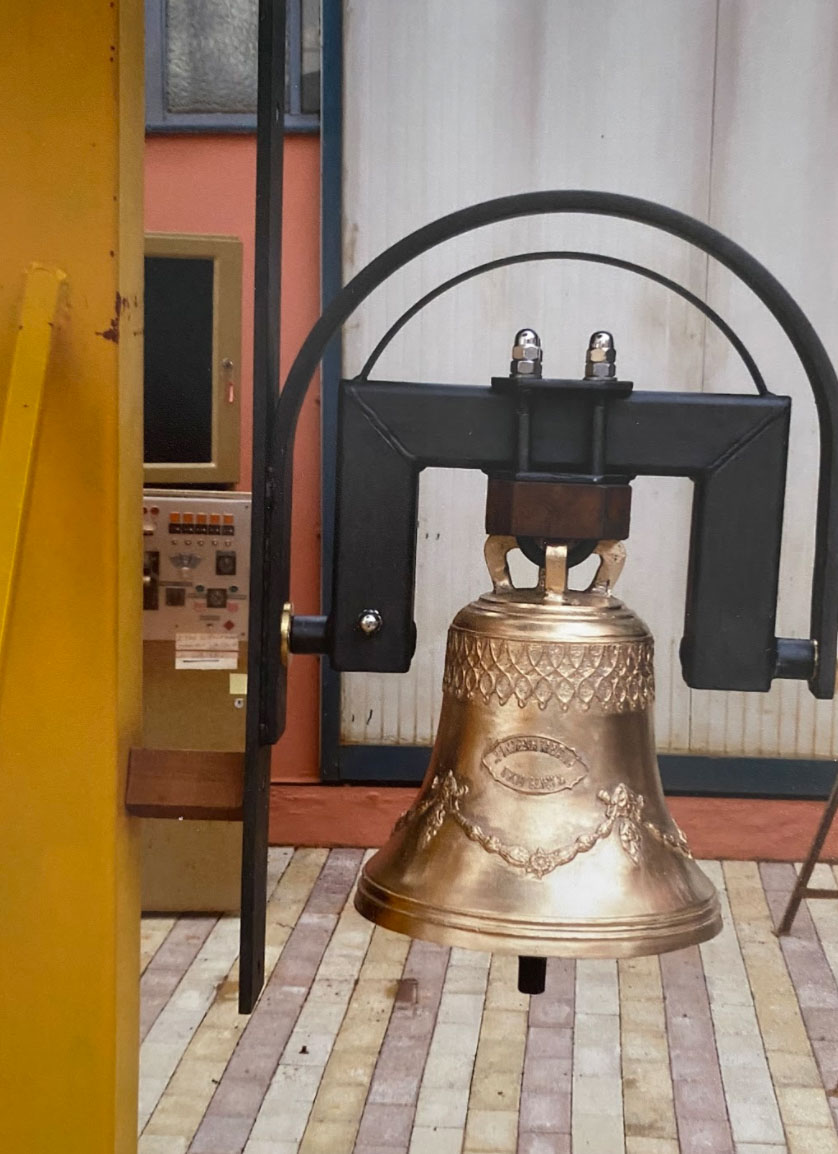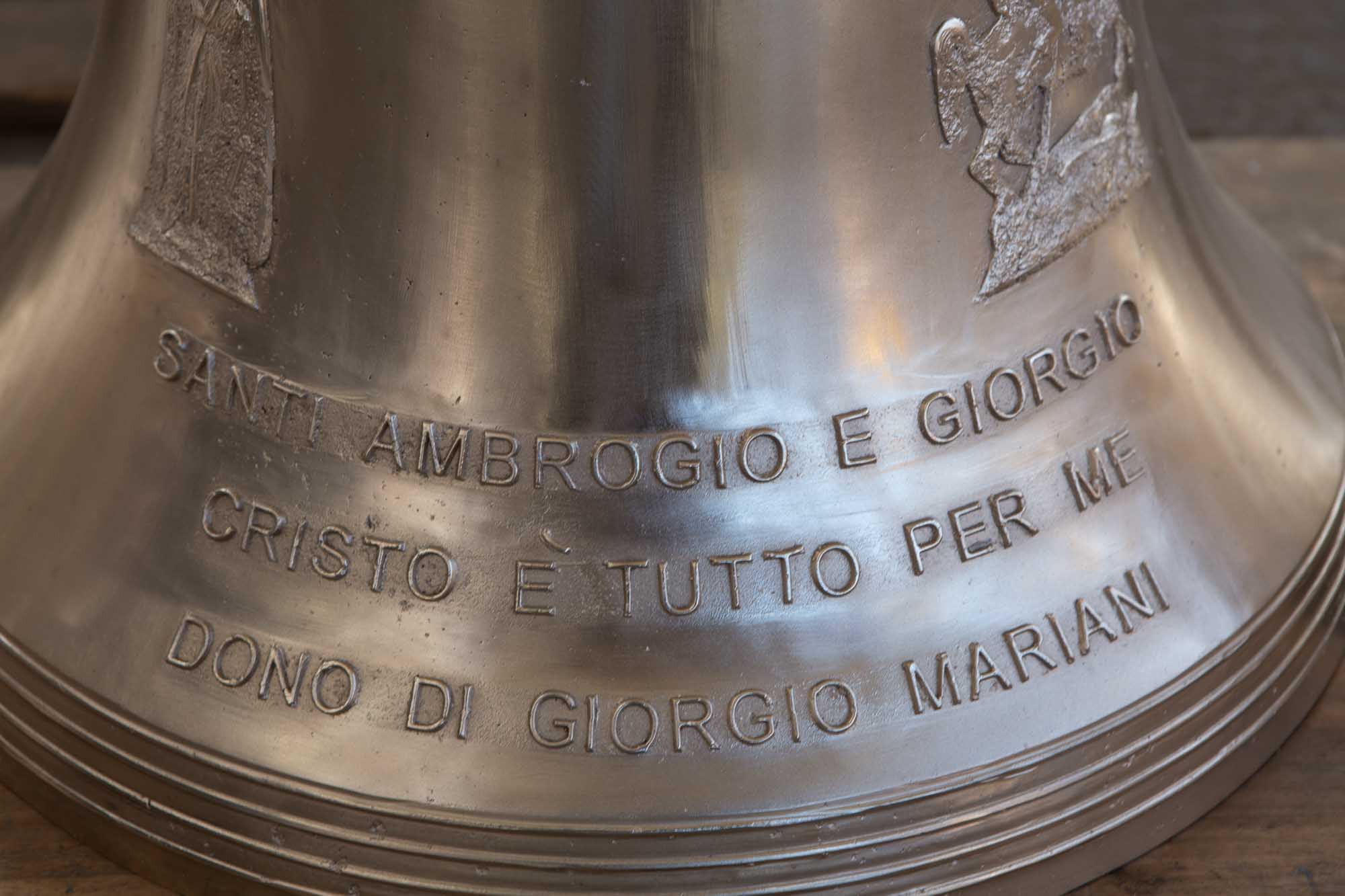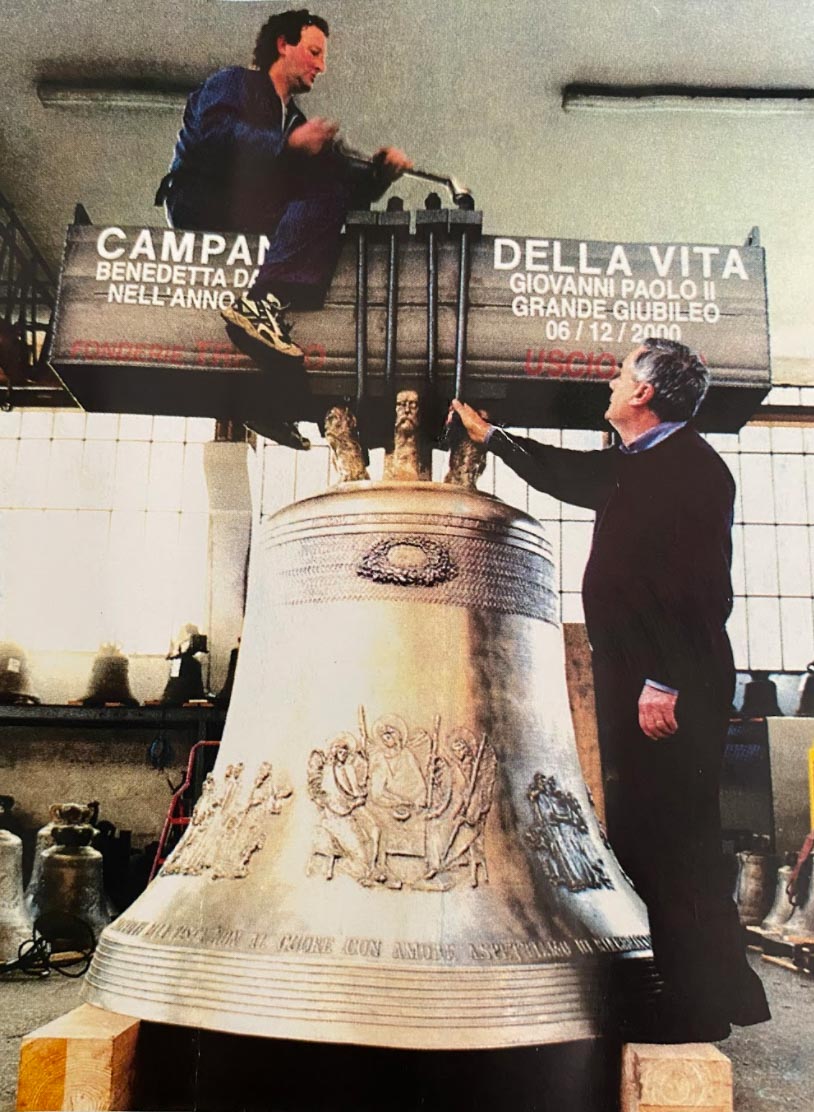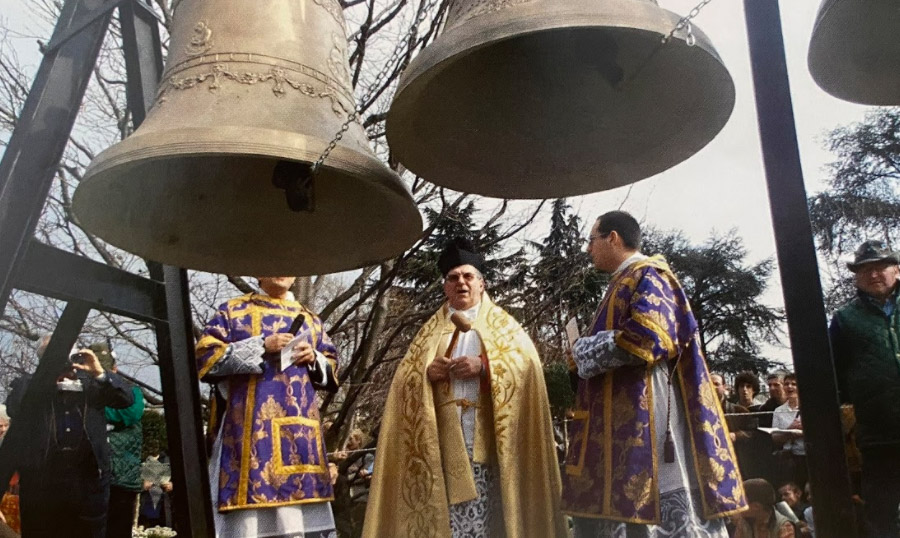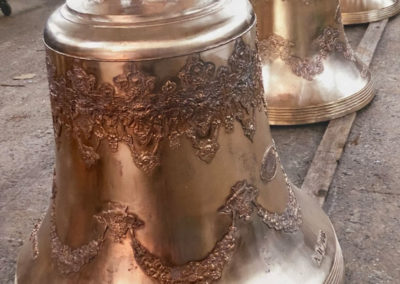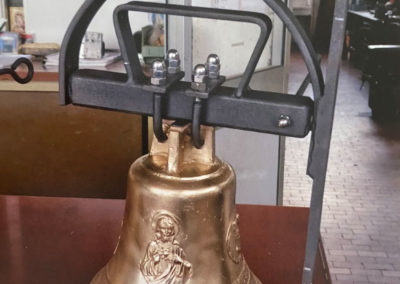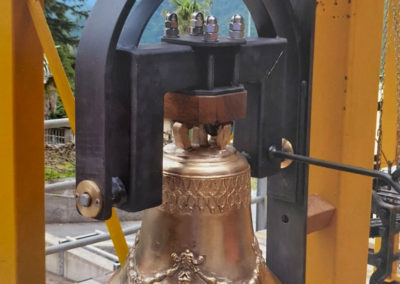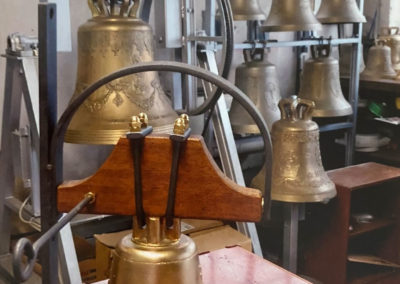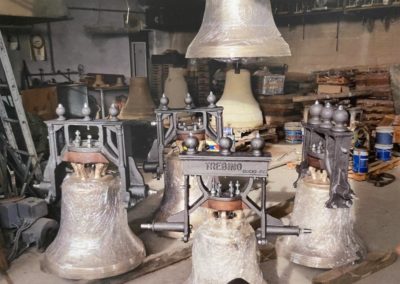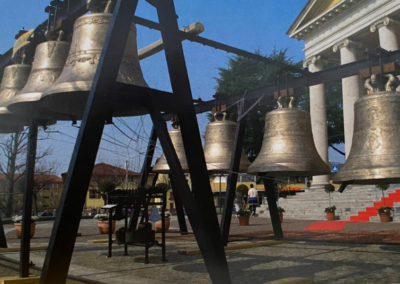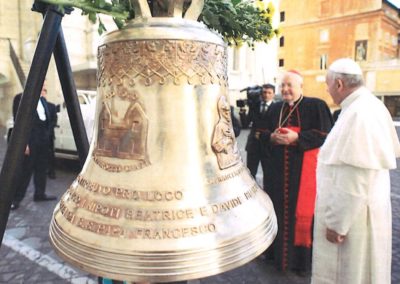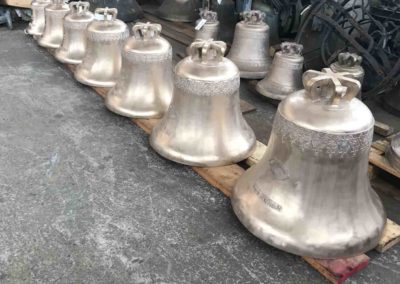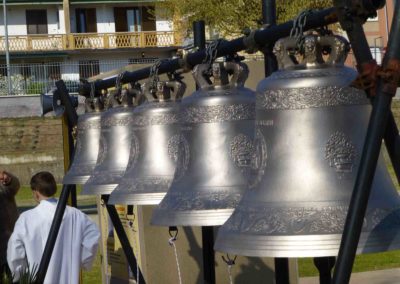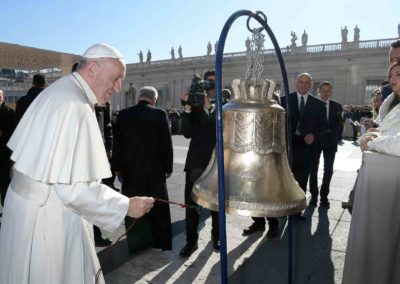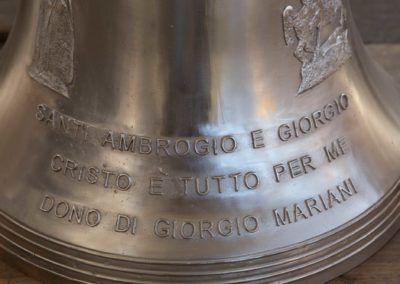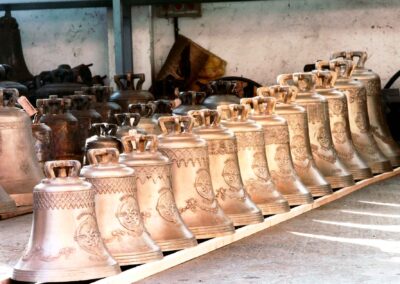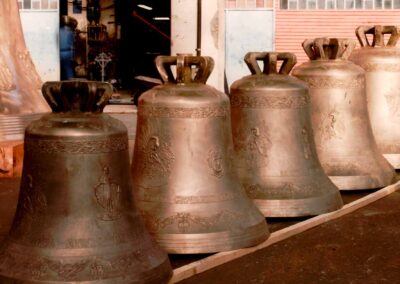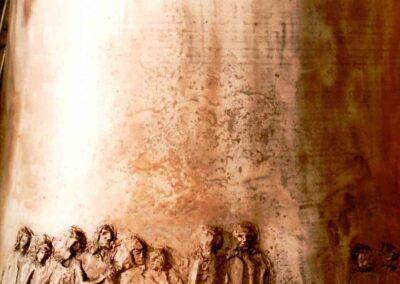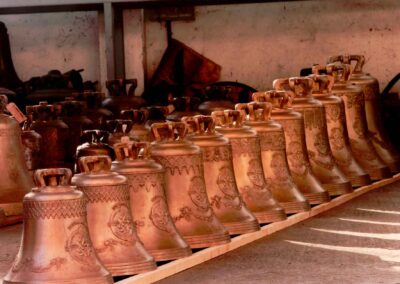Bronze bells
Bells

Trebino bells are veritable works of art, crafted with bronze within the company’s foundry in the traditional way. Bells are instruments of the directly-struck idiophone type, with their sounds produced by the percussion of the clapper on the inner wall.
Considered “res sacrae” by the Church, bells are often blessed and commissioned with inscriptions that speak of the communion between earth and sky. From their bell towers, these instruments mark the time and serve as a reference for community functions, anniversaries and events. Long ago, bells were rung by bell-ringers. However, modern bells are electronic and use Laudator and Jubileum Tertium Millennium software developed by Trebino, which has slowly replaced the sacristan and bell-ringer figures. An extremely small computer represents a true revolution in the field of bell electronics. It is programmable in any language and can be set for the entire liturgical calendar. Being a precise and punctual technological system, it eliminates management costs.
Originally, foundry artisans were both laic people and monks who built wrought-iron bells. Only later were bronze bells created in copper and tin alloy.
“The use of particular signs or sounds to summons the Christians in the community to worship dates back to antiquity. Bells were used to announce the most important events of the local community, to recall moments of prayer during the day and especially for the three greetings to the Blessed Virgin Mary. Thus the voice of the bells in some way expresses the sentiments of the people of God when they rejoice and when they cry, when they give thanks or raise supplications and when – uniting in the same location – they manifest the mystery of their unity in Christ the Lord.”
(No. 1455 of the Book of Blessings)
Bell
Bell-ringing
The ringing of the bells, which dates back to antiquity, is an expression of the ecclesiastical community. It marks the hours and is a sign that accompanies liturgical celebrations, manifestations of prayer and communal piety, feast days and the mourning of the Christian community, as well as serving as a reminder to raise greetings to Mary throughout the day.
Bronze bells
In Italy, only a few bronze bell foundries remain. One is Trebino in Uscio, within the province of Genoa, where the art of founding sacred bronzes continues. Experts in the art of bell-making and forging handcraft bronze bells in noble alloy 78/22 (copper and tin) in any weight, diameter and tone, with bas-relief and dedications upon customer request.

Suppliers to the Vatican State
TREBINO ROBERTO s.n.c.
Headquarters and production facility
Via Cannoni, 7 – 16036 Uscio (GE) Italia (IT)
Tel. +39 0185 919410
Fax +39 0185 919427
trebino@trebino.it
Tower clock museum
Via Cannoni, 5-6 – 16036 Uscio (GE) Italia (IT)
Tel. +39 0185 919410


